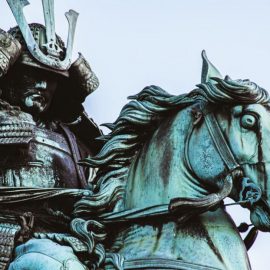

This article is an excerpt from the Shortform book guide to "Built to Last" by Jim Collins and Jerry Porras. Shortform has the world's best summaries and analyses of books you should be reading.
Like this article? Sign up for a free trial here .
How does a visionary leadership style lay the path for enduring success? What does it mean to be a clock builder?
Contrary to public opinion, visionary companies don’t need a high-profile, charismatic leader to achieve enduring greatness. They simply need someone with a visionary leadership style who focuses on clock building rather than time-telling.
Read more to learn about the qualities of a visionary leadership style.
A Superstar CEO Isn’t Everything
Companies don’t become visionary through one charismatic leader. While a high-profile leader who fits the mold of the superstar CEO isn’t necessary, good leadership is. After all, it’s highly unlikely for a company to last long with one mediocre head after another.
What Is a Visionary Leadership Style?
Though their personalities vary from larger-than-life and charismatic to quiet and unassuming, people with a visionary leadership style are driven by a common purpose: They recognize that their job is to build something that will endure even after they’re gone. They know that, just as one great idea and one great product can become obsolete, so too can a great leader. Rather than being driven by making one product successful or building their own personal brand, they focus on building an organization that lasts.
- For example, William McKnight didn’t fit the usual image of a superstar CEO. By all accounts, he was modest, quiet, and thoughtful. Exhibiting a visionary leadership style, he was more interested in leaving behind an enduring company than in being mentioned in history books. He was at the helm of 3M for over five decades as general manager, chief executive, and then chairman. Not a lot of people know his name, but people the world over know 3M, even long after McKnight’s time.
(Shortform note: Read our summary of The 5 Levels of Leadership to learn how to develop a visionary leadership style and become a strong leader that builds a legacy instead of a brand.)
A Paradigm Shift: From Time Telling to Clock Building
The fact that visionary companies don’t rely on one great idea or one superstar CEO represents one of their distinguishing characteristics: Rather than focusing on “time telling,” they focus on “clock building.”
- Time telling: You rely on one person’s unique ability to tell the exact time by looking at the sky. Once that person is gone, everyone else will be lost. Letting one great idea or leader carry a whole company is time telling.
- Clock building: You make a “clock,” or system, that can tell everyone the time, even after you’re gone. Creating an innovative company and strengthening your leadership culture so that the company will continue to thrive is clock building.
For example, Walmart’s Sam Walton had the stereotypical superstar CEO charisma, but also had an essential characteristic of a visionary leader: He was an architect. Using a visionary leadership style, he empowered people to run their departments, gave incentives to encourage creativity and productivity, and democratized the sharing of ideas. He also groomed his successor to ensure that Walmart stayed true to what it stood for.

———End of Preview———
Like what you just read? Read the rest of the world's best book summary and analysis of Jim Collins and Jerry Porras's "Built to Last" at Shortform .
Here's what you'll find in our full Built to Last summary :
- The key to longevity and success for your company
- Debunking the twelve myths about what it takes to build a visionary company
- The four key concepts behind enduring greatness






